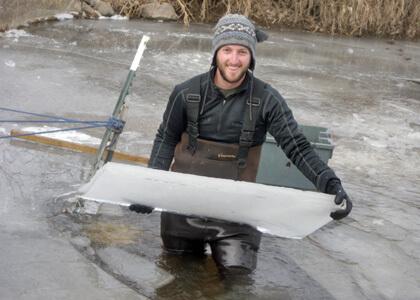A native Vermonter, Lee spent a summer working with the Vermont Youth Conservation Corps which solidified his interest in an environmental career path.
A Lola Aiken Scholar, he enrolled in the Rubenstein School as an environmental sciences major but became enamored with fisheries through Professor Ellen Marsden and pursued a wildlife biology and fisheries minor. As a research technician for Professor Marsden at the Rubenstein Ecosystem Science Laboratory, he helped conduct studies on sea lamprey and lake trout on Lake Champlain and other Vermont waterways.
Lee interned with the U.S. Fish and Wildlife Service for two summers. First, at the Missisquoi National Wildlife Refuge in Swanton, he conducted nesting surveys of water birds and aided conservation efforts on the refuge. Then, in collaboration with the Vermont Department of Fish and Wildlife, he performed fish surveys on Lake Champlain and area rivers and assisted with fish culture at a hatchery.
For his NR 206 senior course project, Lee helped to expand the Salmon in the Schools program in northern Vermont that brings salmon eggs into classrooms for students to raise and learn about salmon and their history in the state.
To gain more fisheries experience after graduation, Lee continued to work on lake trout, whitefish, and sea lamprey studies with Professor Marsden. He also studied the stonecat, an endangered fish in Vermont rivers, with Associate Professor Donna Parrish and her graduate student.
Lee is now a graduate student in the Rubenstein School with Professor Marsden. They are investigating ways to suppress invasive lake trout in Yellowstone Lake of Yellowstone National Park. Lee observes that their research on the success of the fish in Yellowstone may, in turn, help them to understand why young native lake trout have poor survival rates in Vermont’s Lake Champlain.
